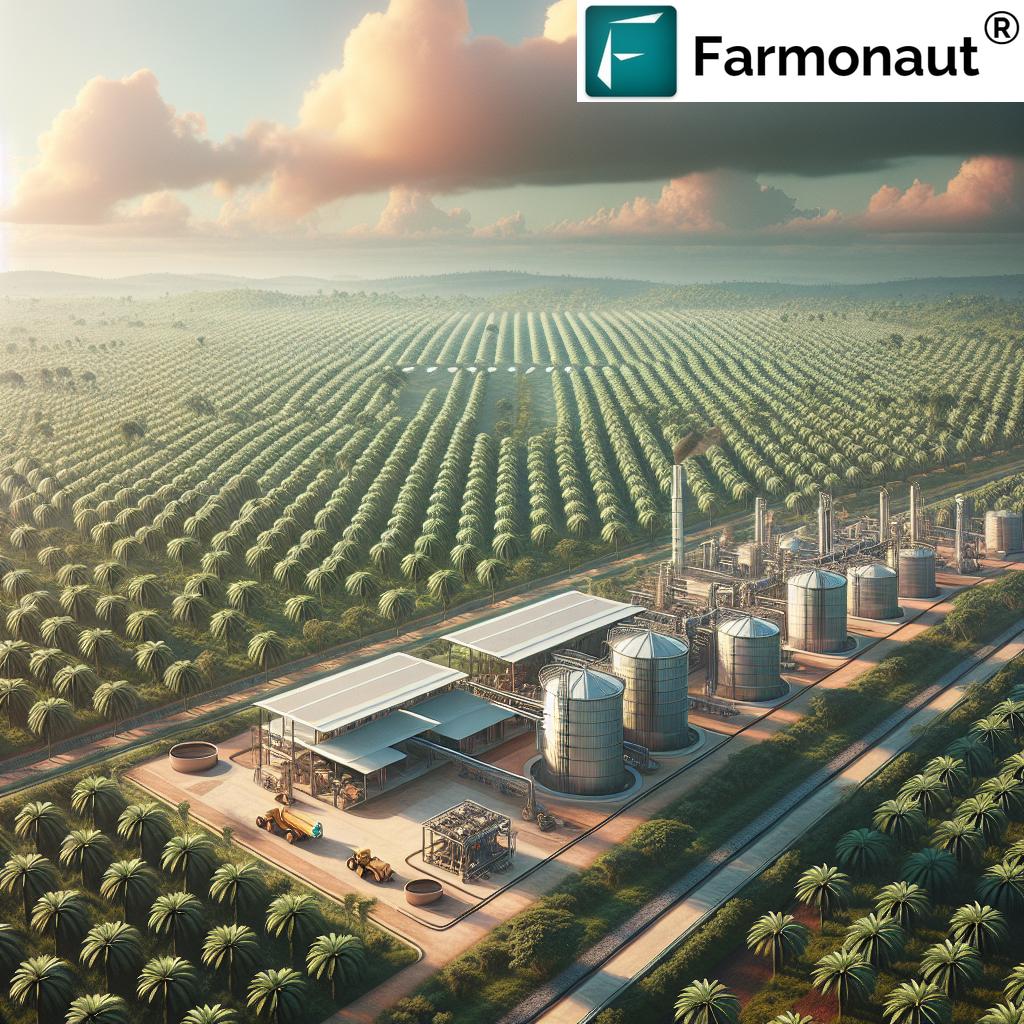Squash Yield Solutions: Soil & Pest Insights South Africa
“Proper soil management can increase squash yield in South Africa by up to 30%, boosting farmers’ profits significantly.”
Introduction to South African Squash Yield Challenges
The vegetable farming landscape in South Africa, specifically in regions like Ekurhuleni and other irrigated zones, faces a unique set of squash yield challenges. Squash is highly responsive to soil, water, pest, and disease conditions—each factor playing a critical role in vegetable crop production and harvest success. For growers targeting optimal output in 2025 and beyond, understanding the current conditions, applying evidence-based management strategies, and leveraging modern monitoring methods are non-negotiable.
In this comprehensive blog, we delve into soil management, irrigation strategies, integrated pest and disease control, and technology-driven yield solutions tailored for South African squash farming. The insights are rooted in agricultural extension resources, regional research, satellite data analysis, and our expertise at Farmonaut—a leader in satellite-based agricultural advisory systems.

Access advanced satellite-powered crop monitoring and advisories for your squash farm →
Understanding Squash Crop Fundamentals in South Africa
Squash (Cucurbita spp.), a staple in South African vegetable production systems, thrives within a fairly narrow range of soil, climate, and management conditions. In Ekurhuleni and other prominent farming zones, the growing period typically extends from September to January (sowing), with harvests falling between December and April—a window dictated by local climate and cultivar maturity.
The crop’s lifecycle follows well-defined phenological stages:
- Germination/Emergence: 5–10 days from planting
- Cotyledon/True Leaf: 10–25 days
- Vegetative Growth/Vine Elongation: 25–45 days
- Flowering: 40–60 days
- Fruit Set & Maturation: 50–100 days
- Harvest: 90–120 days after sowing (variety dependent)
Yields in well-managed, irrigated systems can range from 8,000–12,000 kg/acre (approx. 8–12 tons/ha), with the highest recorded yield in commercial settings reaching up to 15 tons/ha (DALRRD, 2023). Achieving these results, however, relies on targeted soil, water, pest, and crop canopy management.
Phenological Stages: Timing, Sowing, and Harvest Windows
Focus Keyword: Squash Yield Solutions South Africa
A sound understanding of phenological stages—supported by satellite data—is central to yield optimization:
- Sowing Period: September–January (optimal for avoiding frost, using warm temperatures)
- Harvest Period: December–April (matching 3-month crop maturity cycles)
- Post-Harvest Management: Maintain minimal irrigation, monitor for residual pests/weeds, and prepare for next sowing.
Calculated days after sowing and satellite SAVI/NDVI trends help us detect growth progress, stress points, and yield estimates. For instance, if a field’s SAVI (Soil Adjusted Vegetation Index) is showing values below typical NDVI range (0.4–0.6) during harvest, it signals sparse canopy, water/nutrient stress, or other impediments as detected in Ekurhuleni in 2025.
Soil Health Management for Maximum Yield
Focus Keyword: Soil Management for Squash Yield South Africa
Soil composition is foundational to achieving high squash yields in South African vegetable production. Surveys and agricultural research (ARC-Roodeplaat, 2022, FSSA Handbook, 2024) show that successful growers consistently manage the following critical soil parameters:
- pH: Optimal range: 6.0–7.0 (best at 6.5 for squash). Ensures availability of key nutrients and suppresses certain soilborne diseases.
- Salinity: Low, essential for plant root health; drip irrigation reduces salinity risks compared to older methods.
- Soil Organic Carbon (SOC): 0.13% detected—critically low. Target increasing with organic amendments: compost, green manure, and reduced tillage.
- Macro & Micro Nutrients: All five are vital—N (Nitrogen), P (Phosphorus), K (Potassium), S (Sulphur), Zn (Zinc)—with locally relevant ppm and kg/acre benchmarks.
Soil analysis and the application of recommendations should be based on current field data, previous cropping history, and satellite advisories.
Explore Farmonaut’s Carbon Footprinting Module to assess and improve your soil organic carbon for sustainable squash farming.
Fertility Guidelines: Chemical & Organic Approaches
Focus Keyword: Fertilizer Strategies for South African Squash
Sustainable fertilizer management blends both chemical and organic solutions. For squash crops in South Africa, the ideal application rates, frequency, and nutrient sources are as follows (FSSA, 2024):
| Element | Current (kg/acre) | Ideal Range (kg/acre) | Chemical Source | Organic Source |
|---|---|---|---|---|
| Nitrogen (N) | 10.01 | 9.1–22.8 | Urea, LAN, Ammonium Sulphate | Compost, Manure, Blood meal |
| Phosphorus (P) | 15.02 | 22.8–45.5 | Superphosphate, MAP, DAP | Bone meal, Rock phosphate, Compost |
| Potassium (K) | 91.0 | 136.5–227.5 | Potassium Chloride (MOP), Potassium Sulphate (SOP), Potassium Nitrate | Wood ash, Compost, Kelp meal |
| Sulphur (S) | 6.37 | 9.1–18.2 | Gypsum, Ammonium Sulphate, SOP | Compost, Natural Gypsum |
| Zinc (Zn) | 0.46 | 0.9–4.6 | Zinc Sulphate, Zinc Oxide, Zinc Chelate | Compost, Zinc-rich residues |
- If levels are low (below ideal), increase with split applications in the early growth stage
- Organic sources help improve soil structure and water retention; especially important where SOC is critically low (as detected: 0.13%)
- No fertilizer is recommended during the harvest/post-harvest stage—focus instead on rebuilding soil for the next cycle.
Use Farmonaut’s Large-Scale Farm Management Tools to keep track of soil nutrient status, recommended application frequencies, and historical advisory data for all your fields.
Efficient Irrigation Solutions in Ekurhuleni & Beyond
Focus Keyword: Squash Drip Irrigation Best Practices in South Africa
In water-scarce regions like Gauteng, Ekurhuleni, and much of South Africa, drip irrigation is the preferred method for squash production (WRC, 2022). Benefits include:
- Efficient water use: Targets root zones, minimizing evaporation and runoff
- Reduces risk of foliar diseases: Less leaf wetness lowers incidence of downy and powdery mildew
- Allows consistent moisture control: Crucial for fruit development and preventing blossom-end rot
- Frequency: Every 2 days, small amounts (~2.5 mm per application) to maintain minimal soil moisture in post-harvest period
- Manual adjustment: Increase only if establishing cover crops or preparing for next cycle with dry soil conditions
Access Farmonaut’s API for real-time irrigation scheduling, NDWI tracking, and field-level weather forecasting—integrated with your own software and farm systems.
Developers: Explore our API Documentation for advanced integration possibilities.
Canopy, Growth Monitoring & Satellite-Driven Insights
Focus Keyword: NDVI & SAVI for Squash Crop Health in South Africa
Satellite-derived indices such as NDVI (Normalized Difference Vegetation Index) and SAVI are essential to track crop health, estimate yield, and target interventions. In 2025, these technologies are standard for every serious South African squash grower.
- NDVI: Measures live green vegetation—the typical range for healthy squash at harvest stage is 0.4–0.6.
- SAVI: Used when vegetation is sparse (low SAVI = 0.2–0.37), indicating stress, drought, or advanced senescence.
- NDWI (Normalized Difference Water Index): Helps in detecting soil/crop water stress. Persistently low NDWI values indicate dry conditions commonly found post-harvest or during drought seasons.
- Interpretation: Low SAVI & NDVI + low NDWI signal significant water/nutrient stress & suggest adjusting irrigation and fertility practices.
Weed Management: Battling Key South African Weeds
Focus Keyword: Weed Control for Squash Fields in Ekurhuleni
Weeds are a high-probability yield risk in irrigated squash fields with sparse canopy. Common weed species in Ekurhuleni include:
- Amaranthus spp. (Pigweed)
- Cyperus esculentus (Yellow nutsedge)
- Portulaca oleracea (Purslane)
- Conyza bonariensis (Fleabane)
Symptoms: Poor squash stand, wide open bare areas (as shown by low SAVI), and high weed germination rate.
- Chemical solutions: Use pre- and post-emergent selective herbicides for broadleaf and grassy weeds, as recommended in the South African Journal of Plant and Soil, 2021
- Organic solutions: Extensive manual weeding, mulching (suppresses light and moisture for weed seedlings)
- Integrated approach: Monitor regularly (satellite and field scouting); time weed control after rainfall or irrigation for maximum impact
Benefit from Farmonaut’s Blockchain-Based Product Traceability to transparently document your weed, pest, and disease management history for compliance and premium markets.
“Effective pest and disease control reduces squash crop losses by over 40% annually in South African vegetable farming.”
Pest & Disease Management for South African Squash
Focus Keyword: Pest Management Strategies in South Africa Squash
Pests and diseases can cause significant losses if left unchecked. Based on 2025 advisories and research, the following threats are of high probability:
- Red Spider Mites: Thrive in dry, stressed crops; detected under low NDWI and SAVI conditions. Symptom: Bronzed, stippled leaves; webbing on the underside.
- Aphids: High in stressed or weak crops; vectors for virus diseases. Symptom: Sticky honeydew on leaves, clusters on growth tips.
- Disease: Powdery & Downy Mildew — prevalent in warm, humid, but poorly ventilated stands. Powdery mildew is especially critical post-canopy closure.
Recommended Solutions — Chemical & Organic
- Chemical: Acaricide application for mites, systemic insecticide for aphids, and fungicide for mildew (choose group actives to prevent resistance).
- Organic: Use insecticidal soaps, Neem oil spray for aphids and mites; baking soda or copper fungicide for mildew prevention.
- Integrated management: Regularly scout (supported by satellite stress indicators), maintain optimal moisture, and rotate interventions.
Access Farmonaut’s Crop Loan & Insurance module for verified, satellite-backed disease and pest risk documentation—streamlining financial security for your squash production cycles.
Squash Crop Issue-Solution Impact Table
| Issue | Symptom/Indicator | Recommended Solution | Estimated Yield Improvement (%) | Notes/Action Steps |
|---|---|---|---|---|
| Soil Fertility (Low SOC, N, K, Zn) |
Weak growth, yellow leaves, low NDVI/SAVI | Apply compost; balanced chemical nutrition; add Zn if low | +10–15 | Regular soil tests; adjust rates per advisory |
| Drip Irrigation Efficiency |
Dry soils, withered plants, low NDWI | Optimize drip frequency; check system leaks |
+12 | Monitor soil moisture; use satellite NDWI |
| Powdery Mildew | White spots, leaf curl, early fruit abortion | Fungicide /baking soda spray |
+8 | Target pre-outbreak; rotate actives |
| Red Spider Mites | Stippled leaves, webbing, bronzing |
Acaricide /insecticidal soap |
+6 | Prioritize during drought/stress; monitor SAVI |
| Aphid Infestation | Honeydew, stunted tips |
Neem oil/systemic insecticide | +7 | Early intervention limits virus spread |
| Critical Weeds (e.g., Pigweed, Yellow Nutsedge) |
Patchy stand, sparse squash canopy |
Mulch; herbicide/manually remove |
+10 | Control pre-flowering; check after every rain/irrigation |
| Salinity Build-up | Burnt leaf tips, stunted roots | Flush lines, rotate water sources | +4 | Monitor EC and pH; opt for drip over flood |
Farmonaut Technologies Supporting Squash Yield Solutions
At Farmonaut, we provide South African squash growers with affordable, scalable, and actionable satellite-based advisory systems, all accessible via our web and mobile applications (explore now).
- Satellite Crop Monitoring: Real-time NDVI/SAVI for every growth stage and harvest period
- AI-Powered Advisory: Automated interpretation of crop health, water stress, nutrient deficiencies, pest, weed, and disease risks—alerting you before economic loss is visible.
- Blockchain Traceability: Secure, transparent records of field management, from planting to input application through to vegetable harvest.
- API and Integration Tools: Link Farmonaut’s API with your inhouse farm systems, software, or agribusiness platform for seamless real-time insights.
- Fleet and Resource Management: Optimize farm machinery, reduce waste, and improve logistics from sowing through to marketing.
Track and manage your field operations efficiently with Farmonaut’s Fleet Management system.
FAQ: South African Squash Yield, Soil, and Pest Insights
What is the best soil pH for squash in South Africa?
Squash crops require an optimal pH range of 6.0–7.0, with 6.5 being ideal for both nutrient uptake and disease suppression.
How much does effective pest and weed management increase squash yield?
Integrated pest and weed management can reduce crop losses by 40% or more, resulting in yield gains of 8–15% when consistently applied.
Which irrigation system is recommended for squash fields in water-scarce areas like Ekurhuleni?
Drip irrigation is the most efficient, minimizing salinity build-up, water wastage, and risk of foliar disease.
Why use satellite-derived NDVI and SAVI instead of only field scouting?
NDVI/SAVI provide spatially comprehensive, unbiased crop health maps—early detection of stress leads to faster response and better yield outcomes.
Do I apply fertilizers in the late harvest or post-harvest stage?
Fertilizer applications in squash fields are not recommended during the harvest/post-harvest period; focus shifts to soil amendment for the next cycle.
Farmonaut Subscription & Advanced Tools
Ready to harness the power of satellite analytics and AI-advisory for your squash, vegetable, or mixed farming operation? Our subscriptions support individual farmers, agribusinesses, and government extension initiatives—delivering data-driven recommendations, risk assessments, and traceable reporting for every farm size.
References & Further Reading
- Department of Agriculture, Land Reform and Rural Development (DALRRD) South Africa. (2023). Production Guidelines for Vegetables.
- ARC-Roodeplaat. (2022). Vegetable Production in South Africa. [ARC website].
- University of Pretoria, Department of Plant and Soil Sciences. (2021). Integrated Pest Management for Cucurbits in South Africa.
- CropLife South Africa. (2023). Pest and Disease Management Guides for Vegetable Crops.
- Van der Merwe, R., & Fourie, J. (2021). Weed Management in Irrigated Vegetable Production Systems in South Africa, South African Journal of Plant and Soil, 38(2), 123-130.
- Water Research Commission (WRC) South Africa. (2022). Efficient Irrigation Practices for Vegetable Production. [WRC website].
- Fertilizer Society of South Africa (FSSA). (2024). Fertilizer Handbook for Vegetable Crops.
- FAO, Soil Organic Carbon: The Hidden Potential.
- USDA NRCS. Soil Health Management Systems.














